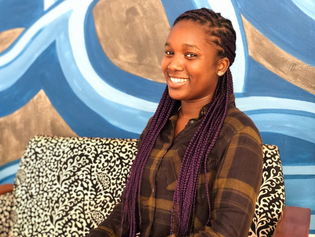|
The Gambia is the smallest mainland country in Africa with an area of about 11,360 km2. It is surrounded by the Atlantic Ocean on the west and by Senegal on the north, south and east. Sourced from the Fouta Djallon highlands on the east and connected to the Atlantic Ocean on the West, the River Gambia runs through the entire length of The Gambia, thus geographically dissecting it into northern and southern parts. It hosts vast interlinked aquatic habitats ranging from freshwater, brackish to marine. Along the riverbanks, rich extensive mangrove ecosystems serve as habitat to various marine organisms and support food security. The estimated population of the country is about 2.5 million, 50.6% of which are women. Agriculture plays a significant role in The Gambia's economy by employing about 70% of the labour force, 32% in primary agricultural production; 54% of which are women and contributing to 25% of the country's GDP (FAO et al., 2018). Within the agricultural sector is rice production which is a staple food in The Gambia. Rice was mainly grown along the riverbanks through tidal irrigation from the river Gambia (M’koumfida et al., 2018). Due to global sea-level rise, low-lying topography of the country, groundwater extraction, reduced rainfall and back effect, saltwater has intruded both groundwater and the river Gambia (M’koumfida et al., 2018). This has deprived women of affected regions easy access to clean water for domestic chores and agricultural productivity. Women are experts on swamp farming (M’koumfida et al., 2018) and are dependent on the river for farming and household chores. Due to freshwater salinization, these errands have likely become more troublesome by negatively affecting rice production and livelihoods of the women (M’koumfida et al., 2018). Strengthening and supporting women affected by freshwater salinization in The Gambia will tremendously contribute to food and financial security, and improve health of Gambians in rural communities.  In addition, aquatic science education is not included in the school curriculum. This coupled with lack of data from continuous monitoring to assess the effects of climate and environmental change along the river Gambia led to the birth of the Gambia Environmental Monitoring Systems (GEMS) Project. This research project provides the first environmental and biodiversity data set (aquatic parameters: pH, Salinity, Dissolved Oxygen and Temperature) across the whole length of river Gambia through active participation of various communities and exchange of scientific and local knowledge.  GEMS is supervised by Maiyai Taal Hocheimy, Director and founder of Gaining Research Experience in Africa for Tomorrow (GREAT) Institute, the first aquatic sciences research and educational institute in The Gambia and I have the pleasure to be the project coordinator. The institute prioritizes women empowerment and gender equality in all programs and projects. Particularly, at the GEMS project, we focus on empowering individuals, with emphasis on women, whose livelihood depends on the ecological services from the river Gambia. One of these beneficiaries is a female-dominated oyster harvesting association called TRY Oyster Women Association. Four women from this association were trained to monitor different locations along their site of work, Tanbi Wetland Complex. Weekly, hand-held equipment is used by the women to collect water quality and weather data along different parts of the River Gambia. Monthly, field technicians from GREAT collect data using a multi-probe meter to ensure data accuracy across the sequence of data collected by all groups. The women have a user-friendly data log book with pictures and illustrations (for those that are not proficient in the English language) where the data is recorded. The work of these women is continuously supervised by the field and lab technicians of the GREAT Institute. A brief description of the project can be found in this video. Even though the GEMS project works with communities from all the regions in The Gambia, it was impossible to get an equal number of women and men on the project. This is because girls’ education is not equally encouraged as boys’ in rural communities. Tertiary institutions are located in urban Gambia and students from rural communities have to travel for studies. Mostly, men are permitted to travel for further education and women stay back to assist in domestic chores. This has hindered the representation of women in citizen science projects such as GEMS. But the team will continue getting more women involved because we believe that “... if you educate a women you educate a nation” and in extension, an entire generation. References
2 Comments
29/10/2022 08:39:36 pm
<strong><a href="http://www.supplementguidesg.net/phengold.html">Phengold</a></strong>
Reply
29/10/2022 08:42:03 pm
<a href="http://www.naturalproductsinfo.net/brutal-force-steroids-is-brutalforce-usa-legit.html"><strong>Brutal Force SARMS</strong></a>
Reply
Leave a Reply. |
CategoriesArchives
March 2024
AuthorDifferent members of the Gender and Science AIL group will contribute to the Blog, as well as invited collaborators. |


 RSS Feed
RSS Feed